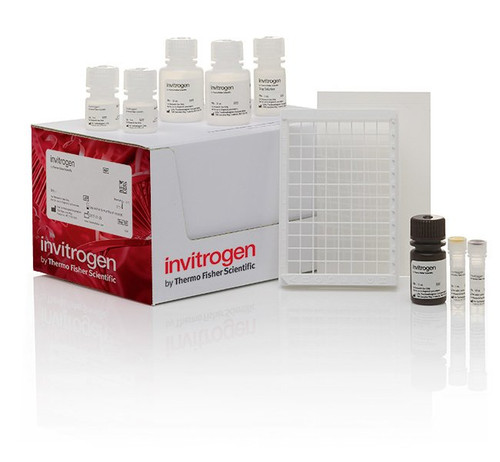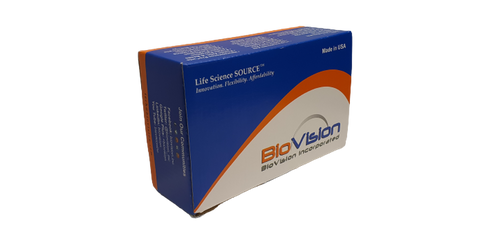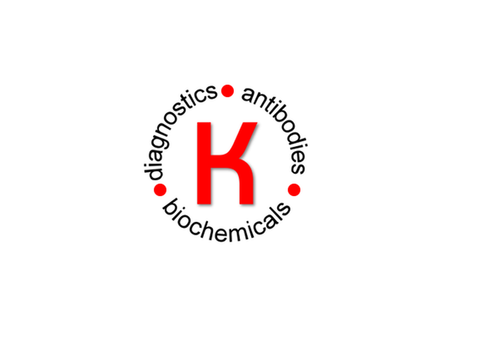Product Description
SOD activity assay kit
Description
The Superoxide Dismutase Activity research-use-only kit is a colorimetric activity assay designed for the quantification and detection of superoxide dismutase activity in serum, plasma, cells, tissues and erythrocyte lysates.
This complete, ready-to-use kit includes clear 96-well plate(s), superoxide dismutase standard (1 Unit/vial), superoxide dismutase substrate, and other components to perform the assay. A 96-well microplate reader capable of reading optical density at 450 nm is required for use of this kit.
Performance characteristics
• Assay type: colorimetric activity kit
• Sample types: serum, plasma, cells, tissues, and erythrocyte lysates
• Sensitivity: 0.044 U/mL
• Standard curve range: 0.06 U/mL–4 U/mL
• Reactivity: species independent
Background
Short-lived and highly reactive oxygen species (ROS) such as superoxide, hydroxyl radical, and hydrogen peroxide are continuously generated in vivo. In the resting state, the balance between antioxidants and oxidants is sufficient to prevent the disruption of normal physiologic functions; however, either increases in oxidants or decreases in antioxidants can disrupt this balance giving rise to elevated levels of reactive oxygen species (ROS). The cellular levels of ROS are controlled by antioxidant enzymes and small molecule antioxidants. The major antioxidant enzymes, superoxide dismutases (SODs), including copper-zinc superoxide dismutase (Cu/ZnSOD, SOD1), manganese superoxide dismutase (MnSOD, SOD2) and extracellular superoxide dismutase (EC-SOD, SOD3), all play critical roles in scavenging superoxide .
Decreased SOD activity results in elevated level of superoxide which in turn leads to decreased NO but increased peroxynitrite concentrations. The major intracellular SOD is a 32-kD copper and zinc containing homodimer (Cu/Zn SOD). The mitochondrial SOD (MnSOD) is a manganese-containing 93-kD homotetramer that is synthesized in the cytoplasm and translocated to the inner matrix of mitochondria. This assay has been validated for serum and urine samples. Superoxide dismutases are ancient enzymes that should behave in a similar manner to the colorimetric substrate. This assay should to measure SOD activity from a wide range of sources.
Assay principle
The Superoxide Dismutase Activity kit is designed to quantitatively measure SOD activity in a variety of samples. The assay measures all types of SOD activity, including Cu/Zn, Mn, and FeSOD types. A bovine erythrocyte SOD standard is provided to generate a standard curve for the assay and all samples should be read off of the standard curve. Samples are diluted in our specially colored sample diluent and added to the wells. The substrate is added followed by Xanthine Oxidase Reagent and incubated at room temperature for 20 minutes. The xanthine oxidase generates superoxide in the presence of oxygen, which converts a colorless substrate in the detection reagent into a yellow colored product. The colored product is read at 450 nm. Increasing levels of SOD in the samples causes a decrease in superoxide concentration and a reduction in yellow product.
SOD unit definition
One unit of SOD is defined as the amount of enzyme causing half the maximum inhibition of the reduction of 1.5 mM Nitro blue tetrazolium in the presence of riboflavin at 25°C and pH 7.8.
Application
SOD Assay Kit has been used for the determination of superoxide dismutase activity in mammalian cells.
Biochem/physiol Actions
Superoxide dismutases are enzymes responsible for the elimination of superoxide radical (O2-), thereby protecting cells from free radicals-associated damages. They catalyze the dismutation of two superoxide radicals to hydrogen peroxide and oxygen.
 Euro
Euro
 USD
USD
 British Pound
British Pound
 NULL
NULL














